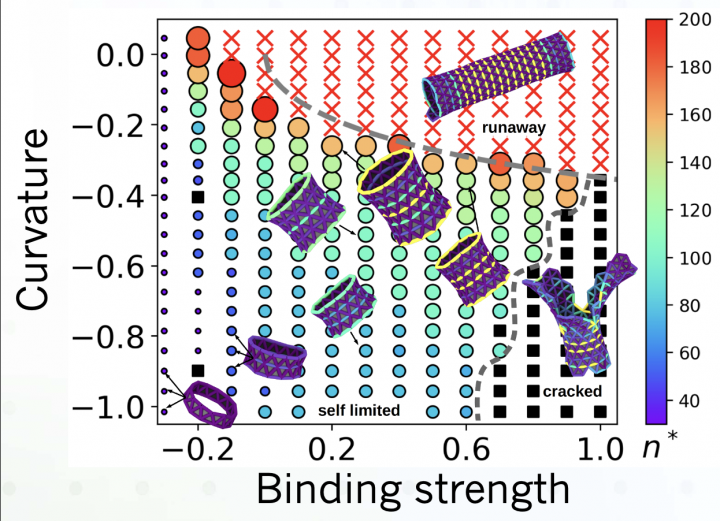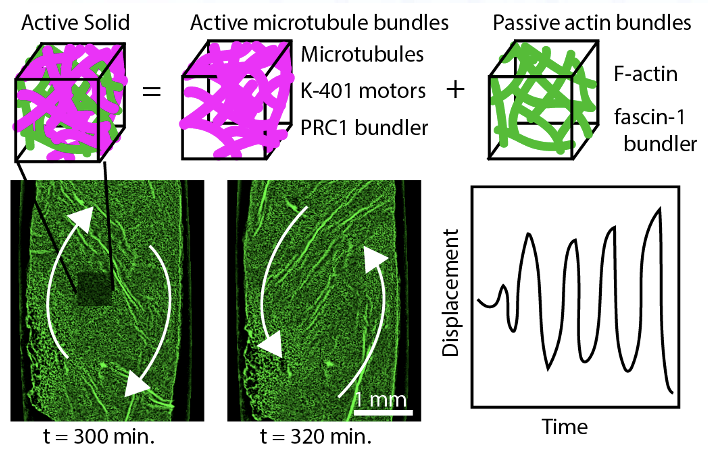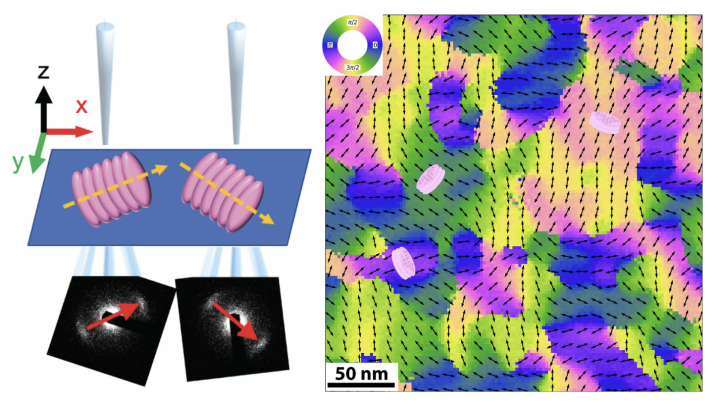Program Highlights for year 2023
Electrohydrodynamic ink jet printing has been used to print CsPbBr3 nanocrystals into very small features, with spot sizes down to only a few hundred nanometers across. The nanocrystals survive the printing, and even spontaneously self-organize into superlattices.
Princeton researchers have demonstrated the physical principles of capillarity, including examples of how capillary forces structure multiphase condensates and remodel biological substrates. As with other mechanisms of intracellular force generation (e.g. molecular motors), capillary forces can influence biological processes. Identifying the biomolecular determinants of condensate capillarity represents an exciting frontier, bridging soft matter physics and cell biology.
Princeton researchers have demonstrated that acid pre-treatment of NaCrS2 to form a new phase (named HxCrS2) results in significant improvements to the material’s performance as a sodium battery electrode.
The search for an unusual form of superconductivity known as topological superconductivity has attracted a great deal of attention of the quantum materials community because of its fundamental novelty and potential applications in fault-tolerant quantum computing technology.
Pb(Hf0.2Zr0.2Ti0.2Nb0.2X0.2)O3, a high-entropy perovskite, undergoes an entropy-driven phase transformation when X=Mn while X=Al always contains minor second phases in bulk ceramics.
Triangular monomers with positive curvature in one direction and negative curvature in another assemble into trumpet shaped objects predicted to have precise self-limited lengths due to frustration-induced stress.
Active composites obtained by merging a conventional soft matter actin gel with energy consuming microtubule bundles that generate active stresses leads to emergent properties not present in the individual systems.
One exciting application of magnetic materials is the use of coherent magnonsas energy-efficient information carriers in spintronicsand magnonicsor as interconnects in hybrid quantum systems.
The transport of energy and information in semiconductors is limited by scattering between electronic carriers and lattice phonons, resulting in diffusive and lossy transport that curtails all semiconductor technologies.
Textbooks say that glasses are structurally disordered and isotropic, meaning that their constituent molecules don’t’ form a repeating pattern and point in random directions.
Pages










